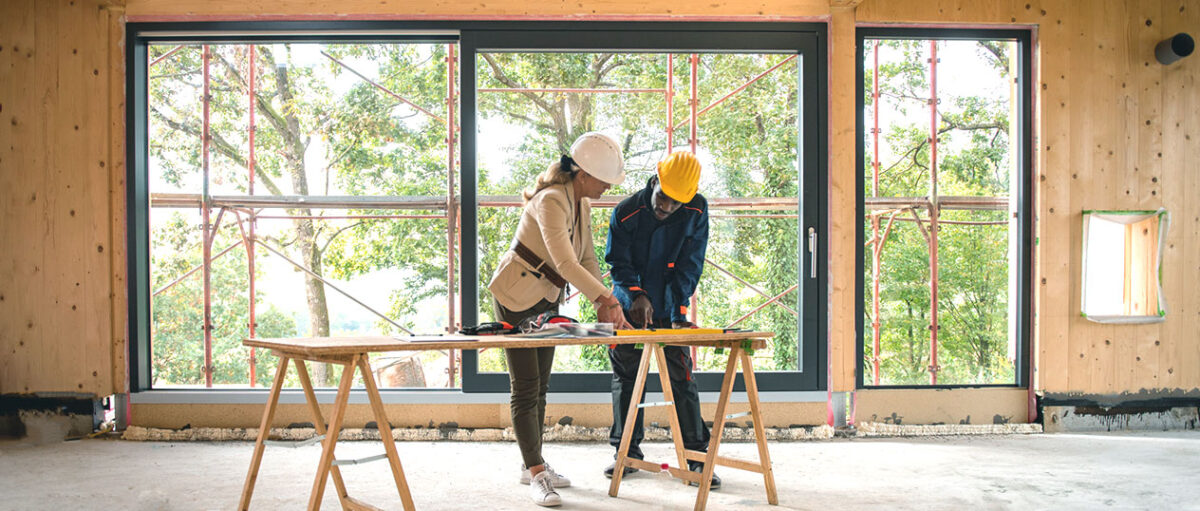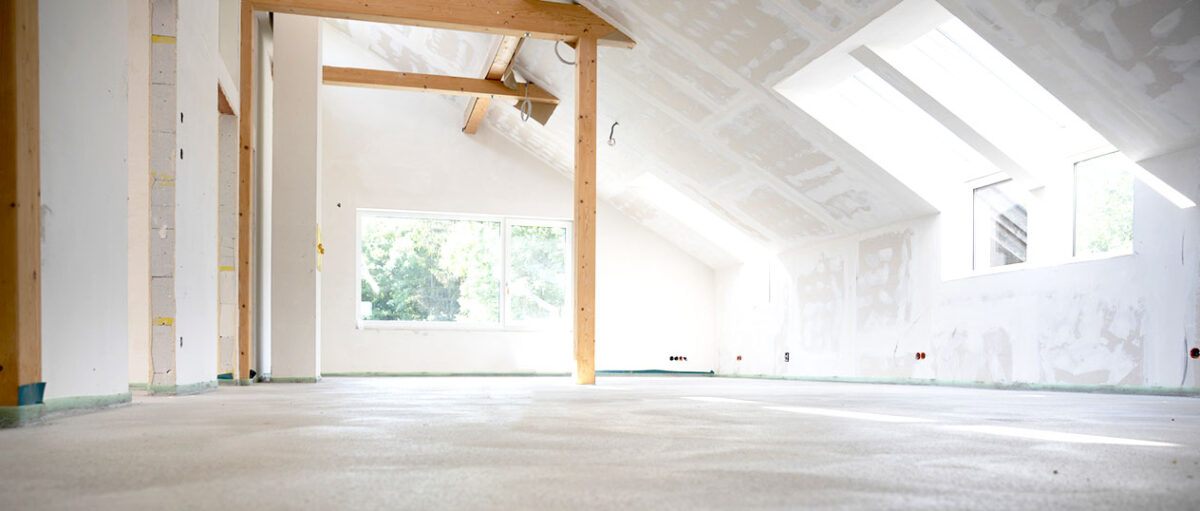
Buying a home in the Sunshine State is a dream for many would-be homebuyers – from the white sand beaches of Miami to the green hues of the Everglades, Florida has a lot to offer in property ownership. While the average price of homes has risen significantly since the onset of the COVID-19 pandemic, Florida has instituted a number of homebuyer programs to make buying a home easier and more affordable.
Are you thinking about buying your first home in Florida? It’s worth taking time to find the right mortgage program for your needs. Read on to learn more about Florida’s housing and mortgage programs available specifically to first-time buyers.
Resources for First-Time Homebuyers in Florida
While the Sunshine State doesn’t offer as many resources as some other states, there are a few perks that come with being a first-time shopper on the road to homeownership.
- Advantageous mortgage loans: Florida Housing offers a Homebuyer Program that offers 30-year Fixed-Rate first mortgage loans at more affordable interest rates.
- Down payment assistance programs: Florida offers forgivable and non-forgivable down payment assistance program options.
- Closing cost assistance: Closing cost assistance programs are available for veterans and other community service workers buying a home for the first time.
Scout the Sewer Lines & Septic Tank
Sure, the house looks great on the outside, but who’s to say if the previous owners loved to flush baby wipes? ‘Getting sewer lines and septic tanks scoped during the inspection is our official recommendation, but in case you had to sidestep an inspection to close the deal, getting it done after the fact is just as helpful.
This isn’t just to check for blockages — it’s to check for damaged and leaky pipes as well. These problems can lead to backups, flooding, foundation damage, and a host of health risks.
Qualifications for First-Time Homebuyers in Florida
While individual homebuyer program options might have variable income limitations and credit qualification standards, there is no list of qualifications you’ll need to meet on a state level to buy a home. The only limitations on homebuying in Florida are related to mortgage qualifications, which vary by lender, area, down payment, loan program, and other relevant personal details. Buying a home in cash if you are able can help you avoid these qualification standards.
Questions to Ask Before Buying Your First House in Florida
Getting a home loan is a big decision – so it is worth asking yourself a few questions before deciding whether you’re ready to buy your first house in Florida.
1. What Are Your Personal Long-Term Goals?
Think about and outline your personal long-term goals and consider how a home fits into your life’s puzzle. For example, if you’ve got a job that you love or you’re thinking about starting a family, starting the homebuying process now might make sense.
2. What is Your Financial Situation?
After your long-term goals, your financial situation is another important factor to determine when and whether you should buy a home. Buying a home can be a long commitment, and you will also need to consider the cost of items like homeowners insurance and maintenance in addition to your monthly mortgage payment to determine a reasonable budget. A mortgage calculator like this one available from New American Funding can help you determine your budget needs.
3. What Are Your Housing Needs?
Your current and future housing needs are key indicators that can tell you whether you are ready to buy a home and how you should shop. For example, if you know that you want to stay in your current area to start a family, you might want to look for larger homes that can accommodate your future needs. If you think it’ll just be you and your spouse for a while, you can shop for smaller properties and budget more money toward renovations.
4. What is the Real Estate Market Trend?
As you start to look for housing opportunities, take note of how real estate prices are changing over time. Examining your local housing market will give you direct insights into how property prices are changing, which can help you buy a home at the most opportune time. For example, if you notice home prices falling, it can be a good time to consider starting to shop for a mortgage lender.
5. What Are Your Mortgage Options?
Did you know that Florida residents have access to multiple types of home loans? The type of loan that you use to buy a home will determine the amount you’ll need in a down payment, how much you’ll pay in interest, and what type of property you can buy.
Before shopping for a home, familiarize yourself with the multiple types of home loans available and consider how each option fits your needs. If you have a strong credit profile and want to access the lowest rates, a conventional loan could be the right choice. If you’re looking for a home loan with more flexible qualifications, a government-backed loan could be a better option.
First-Time Homebuyer Statistics in Florida
Average home price in Florida: $390,856
- Minimum down payment in Florida: 0% (USDA and VA loan)
How to Apply for First-Time Homebuyer Loan Programs in Florida
While buying a home for the first time can seem stressful, the truth is that there are only a few steps you’ll need to go through when buying a home. Most of the process of homebuying – like the title transfer and appraisal review – is conducted by the professionals dedicated to helping you buy, including your NAF Loan Officer and your real estate agent.
Though the homebuying process may vary by individual, most first-time buyers can use the following steps to find buying success.
1. Determine Your Budget
The first step in determining your mortgage budget is to take an honest look at your finances and decide how much home you can afford. Affordability calculators help you get a more complete look at the full cost of homeownership and can give you a clearer picture of what you can shop for based on your monthly ability to cover mortgage payments. Be sure to consider requirements like homeowners insurance, mortgage insurance, and utilities that were previously covered by rent when setting a preliminary budget.
2. Get Pre-approved for a First-Time Home Mortgage
While a mortgage calculator can give you a rough idea of a budget, the most accurate way to learn more about what you can afford is to get pre-approved for a home loan. A mortgage pre-approval is a tentative approval for funding from a mortgage lender that tells you how much funding you’re approved for, subject to underwriting.
After being pre-approved, you can start applying for first-time homebuyer assistance programs. Some of the options that you have in Florida include:
- Florida Assist (FL Assist): The FL Assist program offers up to $10,000 in down payment assistance on the most common loan types, including both Conventional and government-backed mortgages. The loan is issued as a non-forgivable, deferred second mortgage.
- The Florida Homeownership Loan Program (FL HLP) Second Mortgage: Like the FL Assist program, the FL HLP offers up to $10,000 in down payment assistance issued as a non-forgivable loan. It is issued as a 3% fully amortizing, second mortgage.
- Florida Hometown Heroes Housing Program: The Florida Hometown Heroes Housing Program helps teachers, law enforcement officers, firefighters, and other community servants buy their first homes. Eligible buyers can access up to 5% of their home’s value in the form of a 0% non-amortizing, 30-year deferred second mortgage.
- HFA Advantage PLUS Second Mortgage: Select low-income homebuyers may qualify for up to 5% in down payment assistance issued as a forgivable second home loan. This second mortgage is forgiven at 20% per year over its five-year term when used with Florida Housing’s conventional HFA Preferred loan option.
Qualification for each program varies depending on income restrictions specific to your area.
3. Hire a Real Estate Agent
Next, you’ll want to hire a real estate agent to assist in your property search. Real estate agents are home industry professionals who can assist you in finding a property, submitting an offer letter, and closing on a loan. Talk to a few family members and friends who have bought a home in the past for recommendations on how to find a real estate agent. NAF Homes*, an affiliate of NAF, can also make it easy to find local professionals by connecting you to a network of agents.
4. Start the Search for Your Dream Home
Now comes the most exciting part of the buying process – finding the perfect property to purchase. While online real estate databases are a great place to begin searching for homes on sale, ask your real estate agent to help you as you shop. Describe your must-have features to your agent and request that they put together a list of properties to tour. Real estate professionals maintain networks, which can grant them access to listings that have not yet made it to the public market.
5. Make an Offer
It’s done – you have found the perfect property. Now, you will need to make an offer on the home and hope that the seller accepts a bid within your budget. While you can write your offer letter yourself, from a legal standpoint, this is a job better left to your real estate agent. If you write your letter yourself, you could leave out crucial sale details that slow the buying process later on.
6. Conduct Home Inspection
If the seller accepts your offer, you are officially on the road to becoming a homeowner. After letting your mortgage company know that you’re going forward with the home sale, you’ll schedule a home inspection. During the inspection portion of the homebuying process, a professional home inspector will take a tour of the property and create a list of items that will likely need repairs or replacement. As a homebuyer, you can use this list to negotiate contingencies with sellers.
Note that the inspection is not the same thing as the home appraisal portion of the lending process. During an appraisal, an appraiser walks through your property and assigns a rough estimate of the property’s value. Mortgage companies require appraisals because they cannot lend more money than a home is worth. If the appraisal comes in at a lower value than the final selling price of the home, there could be problems with closing your loan.
7. Close the Deal and Become a Homeowner
When the appraisal is returned to you and underwriting comes back clear, you’re in the final stretch of the homebuying process. All that is left to do is attend the closing meeting, where you’ll sign your mortgage loan and take control of your property. Your NAF Loan Officer will arrange closing on your behalf and provide you with a closing disclosure document.
Review your closing disclosure before proceeding and point out errors you notice to your NAF Loan Officer early. Bring your disclosure, loan documents, a government-issued photo ID, and proof of your closing costs and down payment transfer to the closing meeting – and seal the deal on buying your first home.
Four Traditional First-Time Homebuyer Programs in Florida
As a first-time homebuyer, you have a wide selection of home loan options valid in Florida. The following are four common loan types you’ll see between lenders as you compare your options.
1. Conventional Mortgage: Conventional loans are the most common type of home loan and can be used to purchase any type of property. The minimum down payment for a conventional mortgage loan is 3%, but you will need to pay for private mortgage insurance (PMI) if you bring less than 20% down to closing.
To qualify for a Conventional mortgage, you’ll need a credit score of at least 620 points and a debt-to-income ratio of no more than 43%. New American Funding offers both Fixed-Rate and Adjustable-Rate Conventional loan solutions as well as high-value Conventional jumbo loans if you’re purchasing a more valuable property.
2. FHA Loan: Federal Housing Administration (FHA) loans were created to help lower-income people buy a home. FHA loans have less strict credit qualifications and come with a minimum down payment of 3.5% in standard cases. A government-backed mortgage loan option, FHA loans have insurance from the Federal Housing Administration but are offered through individual lenders like NAF. To qualify, you will usually need a credit score of at least 580 points, a debt-to-income ratio of 57% or less, and proof of steady income.
3. VA Loan: If you’re a current or former member of the U.S. Armed Forces or Coast Guard, you might be able to buy a home using a U.S. Department of Veterans Affairs (VA) loan. VA loans are one of the only options available that allow you to buy a home with no money down other than closing costs. While you’ll need to meet service requirements to qualify for a VA loan, this option can make homebuying more affordable by financing up to 100% of your home’s value. To qualify for a VA loan, you will need to receive a letter verifying your service and meet basic credit standards.
4. USDA Loan: A USDA loan is a unique type of home loan that can only be used to purchase a home in a qualifying rural area as defined by the U.S. Department of Agriculture (USDA). If the home you want to buy is in a rural or suburban area, the USDA loan allows you to finance up to 100% of the home purchase price. This means that you will only need to cover closing costs before moving in.
To qualify for a USDA loan, you will need to meet income restrictions relative to your area. You cannot earn more than 110% of your area’s median income, which varies by county. You will also need a minimum credit score of at least 580 points.
What Are the Mortgage Rates in Florida?
Mortgage interest is a payment you make to your mortgage lender in exchange for providing you with funding – you can think of your mortgage interest rate as the “price” of your loan. Interest is included in your mortgage premium calculation each month, so you won’t need to budget extra to cover interest beyond your payment. However, tracking how interest rates are changing over time can be helpful in finding an affordable loan.
Lenders like New American Funding keep mortgage rates updated with the most current market data to help you better research options in your budget.
Enjoy the Homeownership Journey
As a first-time home buyer in Florida, there are various types of programs available to help you achieve your dream of homeownership. It’s important to prepare by saving for a down payment, understanding your budget, and researching the different programs. New American Funding, a trusted lender in Florida, can guide you through the process and offer customized solutions tailored to your needs.
Contact New American Funding today to start your journey towards owning your first home in Florida.
Florida First-Time Homebuyer FAQs
Is There an Income Limit for First-Time Homebuyers in Florida?
There is no legal limit on income for first-time buyers in Florida in general. However, individual down payment assistance options will have income restrictions related to the local average income.
Can a People With Lower Incomes buy a House in Florida?
Yes, people with lower incomes can buy houses in Florida. The state does not have a minimum annual income requirement to purchase a home. As long as your lender approves you for funding and a seller agrees to transfer the property to you, you are free to buy and sell as you see fit.
How Much Does a First-Time Buyer Have to put Down in Florida?
The amount that you’ll need to put down on a home as a first-time buyer in Florida will vary depending on your selected loan program. Conventional loans require 3% down in most cases, while FHA loans require at least 3.5% down. USDA and VA loans require 0% down, allowing you to finance up to 100% of the purchase price of the property.
Does Florida Have First-Time Buyers Programs?
Yes, Florida offers a series of first-time buyer programs that offer down payment and closing cost assistance. The programs are issued through the Florida Housing Finance Corp. and have income limits that vary depending on where you live.
Do you Have to Pay Back Down Payment Assistance in Florida?
Yes, you must pay back the down payment assistance that you receive as a first-time homebuyer with the exception of the HFA Advantage PLUS Second Mortgage.
How Much do First-Time Homebuyers Have to Put Down in Florida?
There is no legal requirement for first-time buyers’ down payment in Florida, but there are requirements that vary by mortgage type. USDA and VA loans require 0% down for qualifying buyers, while Conventional loans require 3% down minimum. FHA loans have the highest minimum required down payment at 3.5%.
Not everything needs to be tackled right away, and not every problem requires a professional solution.




